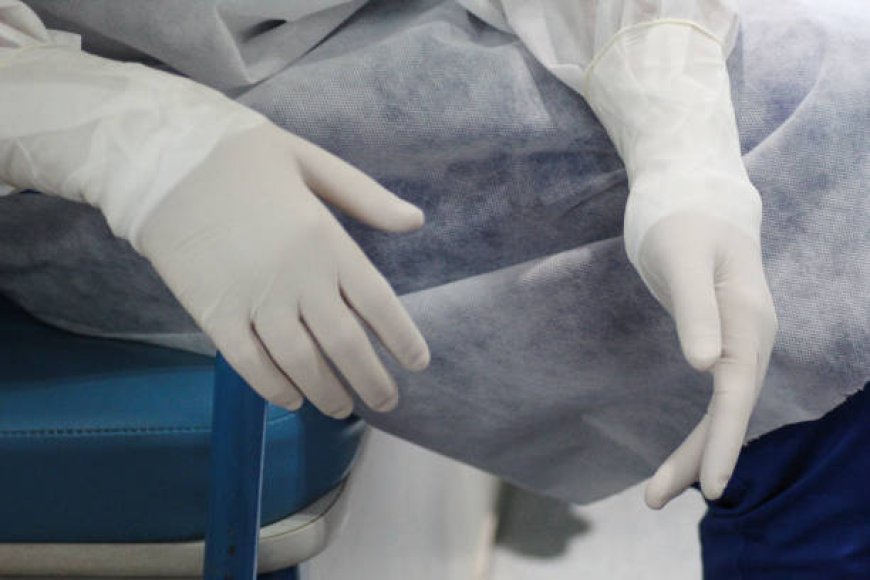Understanding the Procedure: Endoscopic Sleeve Gastroplastyin Abu Dhabi
Experience the advanced Endoscopic Sleeve Gastroplasty in Abu Dhabi, providing effective weight loss solutions with modern techniques.

Endoscopic sleeve gastroplasty Abu Dhabi is a minimally invasive weight loss procedure gaining popularity in Abu Dhabi for its effectiveness and reduced surgical risks compared to traditional bariatric surgeries. Here's a comprehensive guide to understanding the ESG procedure, including its benefits, process, and what to expect in Abu Dhabi.
What is Endoscopic Sleeve Gastroplasty (ESG)?
Endoscopic Sleeve Gastroplasty (ESG) is a non-surgical procedure designed to reduce the size of the stomach using an endoscope, a flexible tube with a camera attached. During ESG, sutures are placed in the stomach, creating a sleeve-like shape that limits food intake and promotes feelings of fullness. This results in gradual weight loss over time.
Benefits of ESG:
-
Minimally Invasive: ESG is performed entirely through the mouth, without the need for external incisions, reducing the risk of complications and speeding up recovery.
-
Effective Weight Loss: ESG has been shown to help patients achieve significant and sustainable weight loss, leading to improvements in obesity-related health conditions such as diabetes, hypertension, and sleep apnea.
-
Reduced Surgical Risks: Compared to traditional bariatric surgeries like gastric bypass or sleeve gastrectomy, ESG carries fewer surgical risks, making it a safer option for individuals with obesity.
-
Shorter Recovery Time: Since ESG is minimally invasive, most patients can return to their normal activities within a few days after the procedure, minimizing downtime.
The ESG Procedure:
-
Preparation: Before the procedure, patients undergo a thorough evaluation, including medical history review and diagnostic tests. They may also receive dietary and lifestyle counseling to prepare for the changes ahead.
-
Anesthesia: ESG is performed under general anesthesia to ensure patient comfort throughout the procedure.
-
Endoscopic Suturing: The gastroenterologist inserts an endoscope through the mouth and into the stomach. Using specialized tools attached to the endoscope, sutures are placed in strategic locations along the stomach wall to create a sleeve-like shape.
-
Monitoring and Recovery: After the procedure, patients are monitored in a recovery area to ensure they are stable before discharge. Most patients can return home on the same day.
Post-Procedure Care:
-
Dietary Changes: Patients are typically placed on a liquid diet immediately after ESG, gradually transitioning to soft foods and then solid foods over time. They are advised to follow a healthy, balanced diet to support weight loss and prevent complications.
-
Follow-Up Appointments: Regular follow-up appointments with the healthcare provider are essential to monitor progress, address any concerns, and provide ongoing support.
Conclusion:
Endoscopic Sleeve Gastroplasty (ESG) offers individuals struggling with obesity an effective, minimally invasive solution for weight loss in Abu Dhabi. With its numerous benefits and the expertise available in Abu Dhabi's healthcare landscape, ESG represents a promising option for those seeking to improve their health and quality of life through weight loss. If you're considering ESG, consult with a healthcare provider in Abu Dhabi to learn more about the procedure and determine if it's the right choice for you.
FAQs
1. What is endoscopic sleeve gastroplasty (ESG), and how does it work?
Endoscopic sleeve gastroplasty (ESG) is a minimally invasive weight loss procedure that reduces the size of the stomach using an endoscope. During the procedure, sutures are placed in the stomach to create a smaller, sleeve-like shape, limiting food intake. This restriction promotes feelings of fullness and helps patients consume fewer calories, aiding in weight loss without the need for surgery or incisions.
2. What is the typical cost of endoscopic sleeve gastroplasty in Abu Dhabi?
The cost of endoscopic sleeve gastroplasty (ESG) in Abu Dhabi can vary depending on factors such as the hospital or clinic, the expertise of the medical team, and any additional services included in the treatment package. On average, ESG may range from AED 30,000 to AED 50,000. However, it's essential to consult with a healthcare provider to get an accurate cost estimate tailored to individual needs and circumstances.
3. Who is an ideal candidate for endoscopic sleeve gastroplasty?
Ideal candidates for endoscopic sleeve gastroplasty (ESG) are individuals with a body mass index (BMI) between 30 and 40 who have struggled to lose weight through diet and exercise alone. ESG may be suitable for those looking for a minimally invasive alternative to traditional weight loss surgery or who are not candidates for surgery due to medical reasons. A consultation with a healthcare provider is necessary to determine candidacy.
4. What can one expect during and after an endoscopic sleeve gastroplasty procedure?
During an endoscopic sleeve gastroplasty (ESG) procedure, the patient is under sedation as a flexible endoscope is inserted through the mouth into the stomach. Sutures are then placed to reduce the size of the stomach. The procedure typically takes about 60-90 minutes. Afterward, patients may experience mild discomfort, nausea, or bloating, which usually subside within a few days. A liquid diet is typically recommended initially, followed by a gradual transition to solid foods.
5. What are the potential risks and complications associated with endoscopic sleeve gastroplasty?
While endoscopic sleeve gastroplasty (ESG) is considered a safe procedure, like any medical intervention, it carries some risks. Potential risks include bleeding, infection, perforation of the stomach lining, and adverse reactions to anesthesia. In rare cases, complications such as persistent nausea, vomiting, or difficulty swallowing may occur. It's essential for patients to follow post-procedure instructions carefully and attend follow-up appointments to monitor progress and address any concerns.












